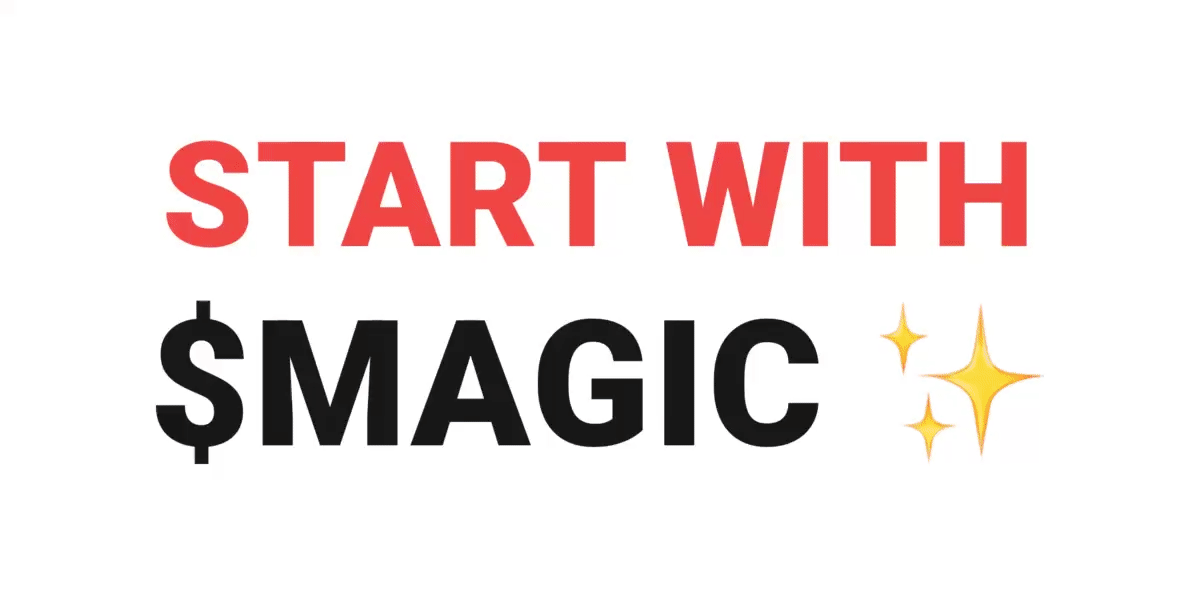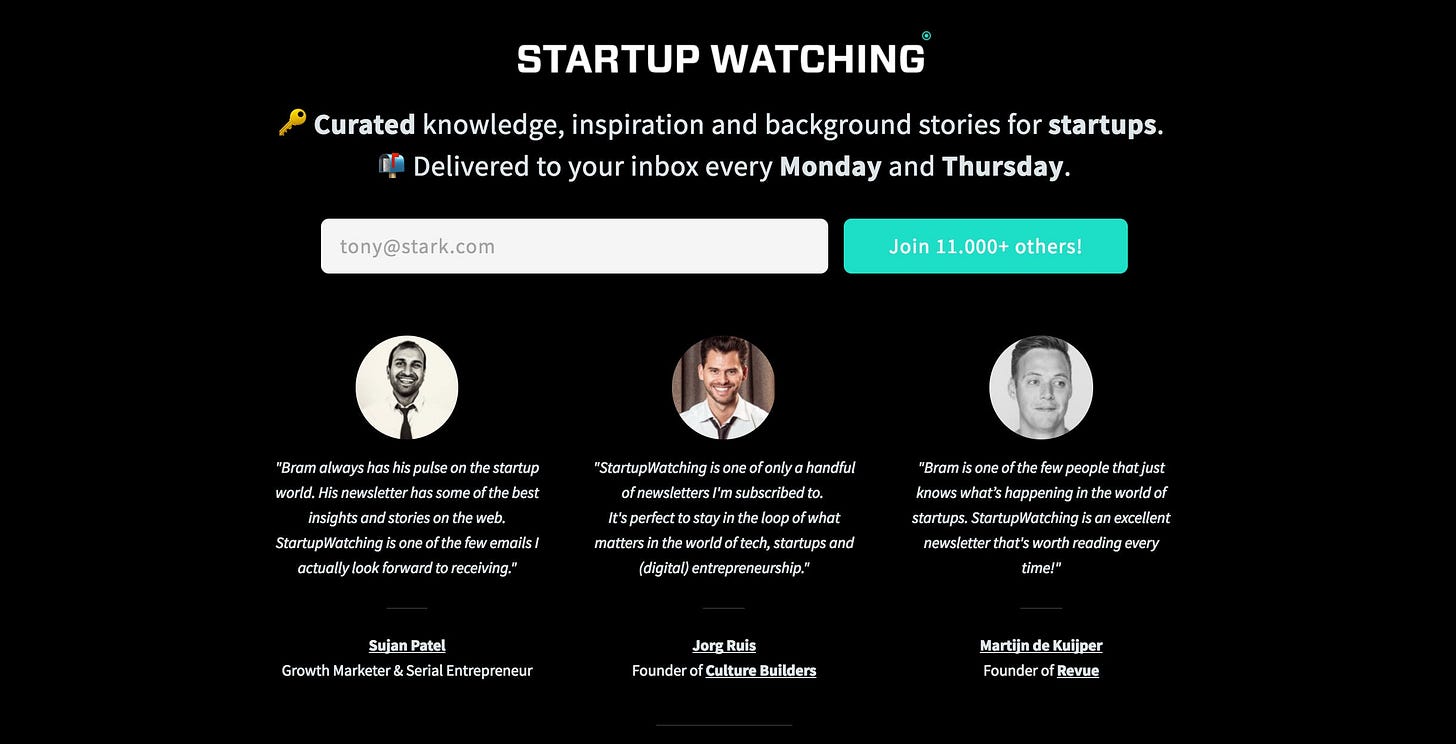🚪How Bram sold 5 curation products for 5-figures each
The No-Code Exit Story of Bram Kanstein
Hello, Katt here.
Welcome to 108 new subscribers.
For the interview this week I spoke with Bram Kanstein. A true No-Code, Product Hunt and Exit legend. He shares so much wisdom and his journey has been a great inspiration and motivation to me when I started with No-Code. Learn how:
🌞 It all started with Startup Stash (#1 All-Time Product Hunt product)
🐰 When you build an idea it is all about the value it brings
❤️🩹 It’s a good thing when your No-Code MVP falls to pieces
🪤 Coding is a trap
🤜 He built and sold 5 content curation products
Enjoy it and happy building!
💡 Exit Inspiration
Get inspired by No-Code projects for sale on Microns 🚀.
What Newsletter Publishers Database
No-Code Tools Softr, Airtable
Revenue $6,638
Price $10,000
Hey Bram, tell us a little bit about yourself
From a young age I loved to explore the internet and I was always early on to new trends.
In my final year of Communication and Multimedia Design I discovered the amazing world of startups and the products I liked made by these Silicon Valley Legends like Kevin Rose (from Digg) and Sean Parker (from Napster).
I decided that this was the direction I wanted to go in. I wrote a paper on the Lean Startup (book from Eric Ries) and after I graduated I started working in the startup space.
How did you start with your first product?
In 2015 I was working for a tech investor. Around that time I discovered Product Hunt. As an early adopter, I absolutely loved it. I begged Ryan (Founder of Product Hunt) to let me on (at that time invite-only) and I started posting products there.
After seeing so many products being launched, the challenge was to build a product myself.
For my work I had been bookmarking 700+ resources to share with the startups I was working with. My idea was to build a resource directory with all those startup tools.
I’m not a developer nor a designer. So I just googled “how to make a….” and I ended up buying a Wordpress directory template that seemed like a good fit. I started to delete the parts of code I didn’t need and a developer friend helped me with fixing some errors.
When I launched it on Product Hunt it blew up! It received 230K pageviews in 48 hours, ended up on Business Insider, Entrepreneur and Forbes. To this day it is still #1 all-time most upvoted product on Product Hunt.
The most important lesson here was that when you build an idea it is all about the value it brings.
Startup Stash were 40 orange blocks. No fancy design, no cool fonts, … People looked right through it because they saw that I invested time in curating the best tools. Lime green, pink, code or no-code it didn’t matter.
How did you get hooked on No-Code?
I was very active on Product Hunt and saw Carrd launching, a no-code website builder. I dove into and I was completely hooked. At a certain moment, AJ (the founder of Carrd) introduced a Zapier integration so now you could:
Display content with your landing page
Capture data with an email capture form
Process and transfer data with Zapier
That workflow works for 80% of startup ideas. Especially during the super early validation stage of a startup when you should focus on validating the idea to see if you want to invest more time, energy and money in it.
I loved how No-Code made making products and validating ideas accessible to anyone. You often hear: “But No-Code doesn’t scale”. If you build something with No-Code and it falls to pieces because you have too many users, then that is a good problem to have. And because you made it with No-Code you went yourself through the product process which makes it easier to brief a technical person.
Let’s go through the 5 products you made and sold
Startup Stash
Year: 2015 - 2017
What: A curated directory of 400 tools for startups
Monetisation: $4-5K MRR with partnerships and affiliates ads
Users: total of 1 million users
Tools: Wordpress template
Acquisition: Happened very randomly. I mentioned in a call with someone from a media agency from Tel Aviv that I was going to sell it and he was immediately interested. I said my price and he said OK.
URL: Check it out here
StartupWatching
Year: 2017 - 2018
What: A bi-weekly newsletter with curated knowledge, inspiration and background stories from the startup world.
Tools: Carrd + Revue
Stats: 11K subscribers
How was it sold: I announced in the newsletter that it was for sale and it was bought by someone who wanted to start a newsletter.
URL: Not online anymore
Road to Scale
Year: 2019
What: 300+ curated content items for every stage of your startup
Tools: Carrd for website, Zapier for automation, Airtable for embedded database
Stats: 20K user after 6 months
How was it sold: Through the community, acquired by a Silicon Valley VC Firm who wanted to build something similar.
URL: Not online anymore
My Pitch Deck
Year: 2022, built in 36 hours
What: Kickstart your funding with a custom pitch deck template for your startup
Tools: Zapier, Tally, Airtable, OpenAI, Carrd
Sold: Sold through Acquire.com to a developer
URL: Check it out
Start with Magic
Year: 2022
What: A directory to help you get started with Magic (ecosystem in web3)
Tools: Carrd
Users: 30K visitors in <3 months
Sold: Via community, a group wanted to continue the project
URL: Not online anymore
Is there a reason why you sell most of your products?
I really love the part of going from idea to product. Doing the research, summarising it and presenting it. That’s enough for me. Everything that comes after that, is just a bonus.
How do you get your ideas?
My products are all about saving time. They mostly started with things I was already doing for myself and I then turned into a product to make it accessible to others.
They are a solution to give people direction and start, discover or learn something new. That’s the recurring theme in my work. I’m learning something myself, diving in for days and weeks and the results I curate and consolidate for other people.
But I think if you are looking for an idea it is important to keep in mind that there are 2 approaches.
You can build to learn: In that case, the idea doesn’t really matter because you are doing it to experiment and learn. That is what I did for ‘My Pitch Deck’. I wanted to try what is possible with Zapier and Open AI, inspired by this tweet from Ben Tossell.
But if you want to build to earn money then you have to follow a completely different approach and you have to focus on finding an idea that adds value and validate if there is interest.
How do you validate your ideas?
If you are just starting out with building your first product I think it is important to follow a framework or a set of steps to go from 0 to 1. That is why I created the MVP Canvas. It helps you to start with a first small version of an idea and helps you define the version you want to achieve in 1 or 2 years.
The most important question when you have an idea is:
What is the fastest way to learn about the needs of real potential users?
Sometimes the fastest solution is to go talking with users before you start building. But with No-Code it is often faster to make a first working version in a few days. Thanks to limited tech skills as non-technical person, you are often forced to focus on the core and work with limitations. I see that as a huge benefit for early stage startups.
Knowing how to code can be a trap. Someone who knows how to code often thinks that the used technology sets it apart and they just love to code. If you want to build a business it is not about that. They are building for months without talking to users and then launch to crickets. They waste a lot of time on things where they are not sure if it has value. It’s not ‘Can I build this?’ but ‘Should I build this?’
How did you find users for your products?
You have to (get to) know the target audience for who you are solving a problem very well, otherwise it becomes very difficult to target them with your proposition.
Most of my products were a solution to a very specific problem I was having myself. By being an member in niche communities I also noticed others having this problem. So I knew I was building products that people would like and find valuable.


What is your advice for No-Code Makers starting out?
My most important advice is to:
Determine which idea is worth your limited time, energy and money
Find an answer to the question ‘Should I build this?’
This will help you to eventually land on that idea that you can turn into a business.
Thanks for sharing all your wisdom Bram. Don’t forget to follow him on Twitter.
🙌 When you’re ready, here’s how I can help
Find product ideas that bring you customers on auto-pilot
Kickstart your no-code journey with these no-code courses
Learn which no-code tool is the best for your idea
Browse through the full library of no-code success stories
Sponsor this newsletter to get in front of 10,000+ subscribers
👀 Don't miss new issues
Subscribe to receive every week an inspiring interview about profitable or acquired projects made with No-Code.






